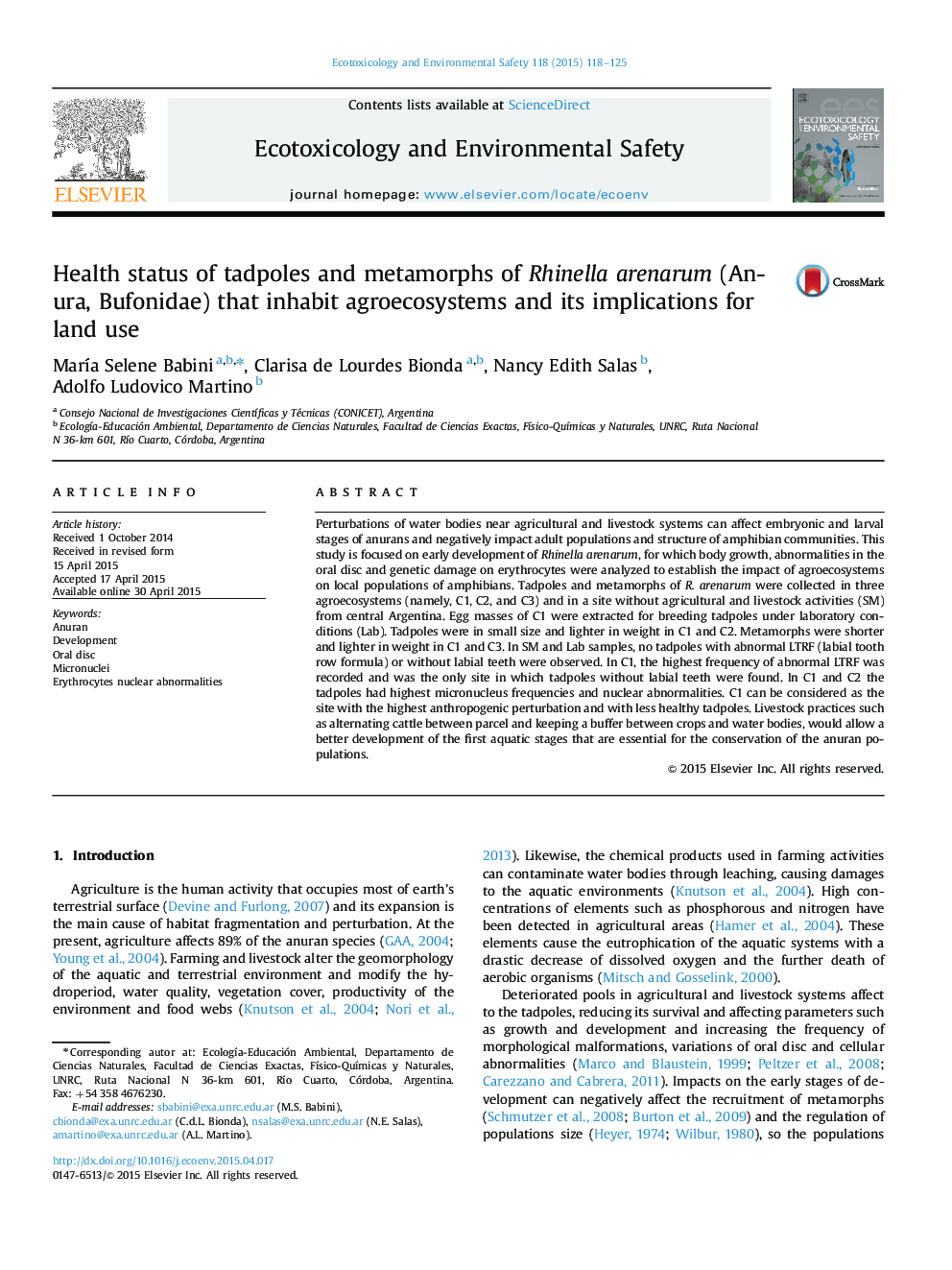| Article ID | Journal | Published Year | Pages | File Type |
|---|---|---|---|---|
| 6312096 | Ecotoxicology and Environmental Safety | 2015 | 8 Pages |
Abstract
Perturbations of water bodies near agricultural and livestock systems can affect embryonic and larval stages of anurans and negatively impact adult populations and structure of amphibian communities. This study is focused on early development of Rhinella arenarum, for which body growth, abnormalities in the oral disc and genetic damage on erythrocytes were analyzed to establish the impact of agroecosystems on local populations of amphibians. Tadpoles and metamorphs of R. arenarum were collected in three agroecosystems (namely, C1, C2, and C3) and in a site without agricultural and livestock activities (SM) from central Argentina. Egg masses of C1 were extracted for breeding tadpoles under laboratory conditions (Lab). Tadpoles were in small size and lighter in weight in C1 and C2. Metamorphs were shorter and lighter in weight in C1 and C3. In SM and Lab samples, no tadpoles with abnormal LTRF (labial tooth row formula) or without labial teeth were observed. In C1, the highest frequency of abnormal LTRF was recorded and was the only site in which tadpoles without labial teeth were found. In C1 and C2 the tadpoles had highest micronucleus frequencies and nuclear abnormalities. C1 can be considered as the site with the highest anthropogenic perturbation and with less healthy tadpoles. Livestock practices such as alternating cattle between parcel and keeping a buffer between crops and water bodies, would allow a better development of the first aquatic stages that are essential for the conservation of the anuran populations.
Keywords
Related Topics
Life Sciences
Environmental Science
Environmental Chemistry
Authors
MarÃa Selene Babini, Clarisa de Lourdes Bionda, Nancy Edith Salas, Adolfo Ludovico Martino,
